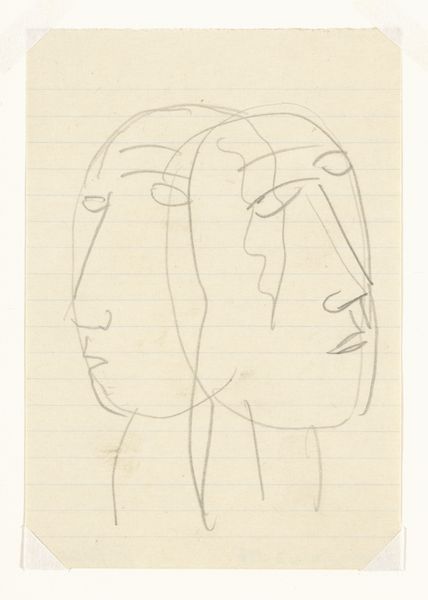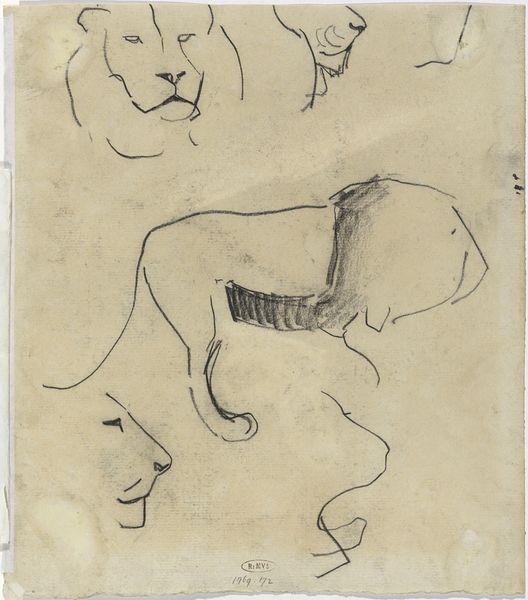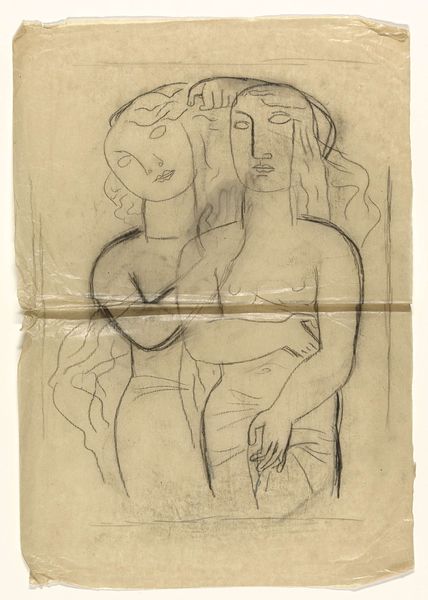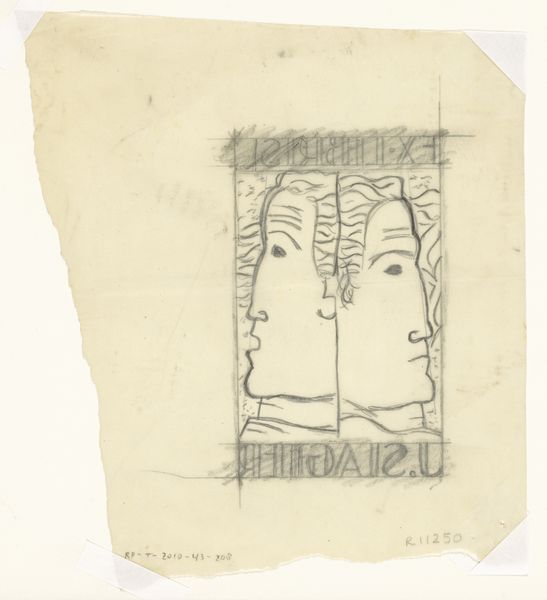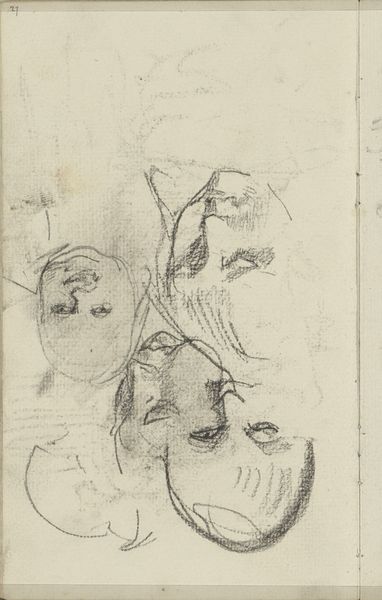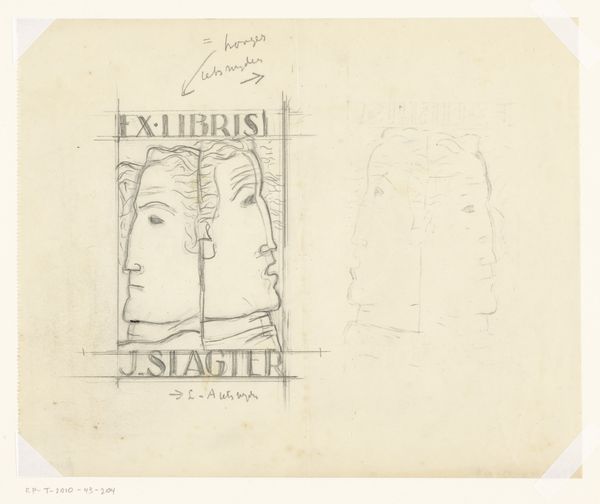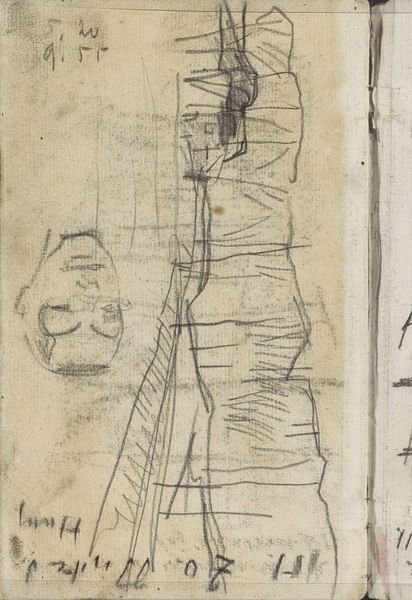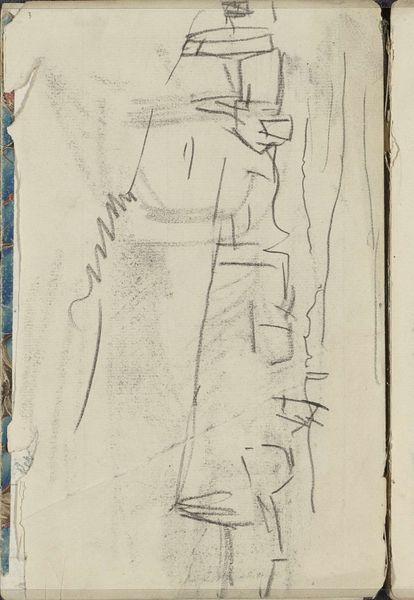
Dimensions: height 180 mm, width 145 mm, height 155 mm, width 100 mm
Copyright: Rijks Museum: Open Domain
Curator: Here we have a design, created in graphite and pencil around 1935-1940, for a bookplate, an "Ex libris voor J. Slagter," attributed to Leo Gestel. Editor: It's more of a quick sketch, really. Sort of hesitant, isn't it? You can almost feel the pencil dancing across the paper. Curator: I think the feeling of it being tentative makes it more precious, really. As an *idea*. Notice how Gestel overlays two profiles within this rectangular framework. You have a very traditional "Ex Libris" inscription, but somehow defamiliarized. The portraits... do they suggest anything about the book's owner? Editor: What catches my eye is the bottom portion, with 'Slagter' in reverse, looking almost branded. I'm curious about the labor involved—the time Gestel dedicated versus what Slagter likely paid for such a personalized mark of ownership. Was this a casual commission, a gift between comrades, or something more formal? What kind of paper did they have to use at the time? All I see now is where material value lies in art. Curator: I'd wager it's somewhere in between. It feels like the product of a specific social world. It's clearly not meant to be mass-produced. You can feel a strong whiff of that in-between-the-wars period. Editor: It's the reverse printing too. Thinking about having to carve out this name perfectly reversed from looking in the mirror feels like labour. Did Gestel embrace this kind of artisanal approach, or was he trying to elevate the material conditions here in relation to artistic expression? Curator: It is intriguing. I think it tells you so much with so little; you get the impression of a man with certain gravitas, certainly intellectual… but there is also some element of the "modern man" hinted at. And, for me, it's also interesting how it embodies the transition period in his work around that time... before he became even more radically abstract. Editor: Well, that adds an interesting layer, knowing he shifted so radically after. Perhaps this was a subtle commentary, even unconsciously, on the changing landscape of artistic labor. Thank you for expanding my view here. Curator: A genuine pleasure. Thank you, likewise!
Comments
No comments
Be the first to comment and join the conversation on the ultimate creative platform.
